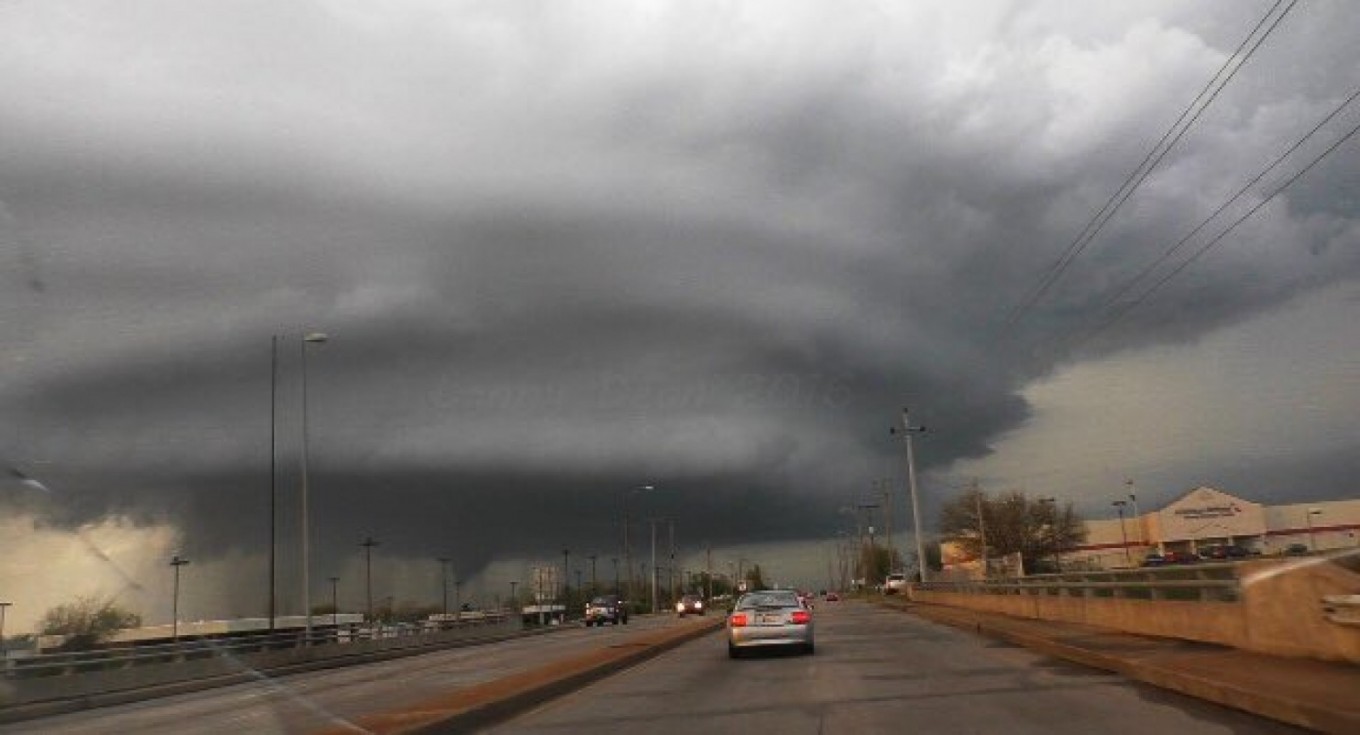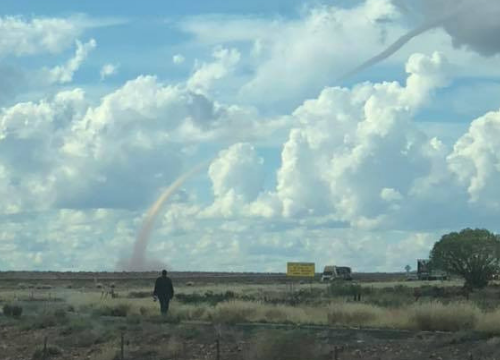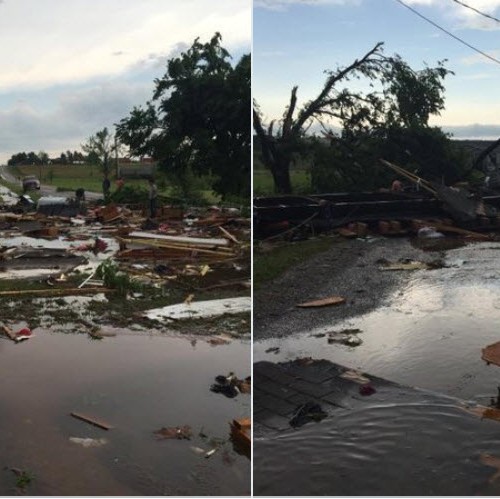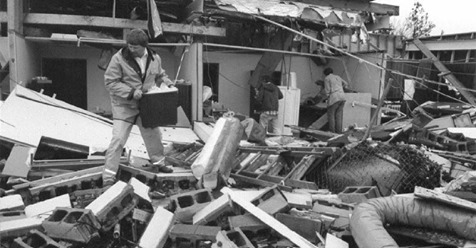This, ladies and gentleman, is what we call a “mothership” supercell.
Meteorologists and storm chasers refer to a select few supercell thunderstorms as “motherships” for a simple, very non-meteorological reason: they resemble spaceships. To be considered a mothership supercell, the whole structure of the storm must typically be seen from top to bottom and end to end. They often have a striated appearance (also known as “frisbee stacks”) spiraling up and resembling a barber pole to altitudes higher than where planes fly. These striations are a visible cue the storm has a strongly rotating updraft, the prerequisite needed to be considered a “supercell” thunderstorm.
These storms can be striking to those in the path, resembling UFO’s over typical thunderstorms. Need more convincing. Check out this photo that was snapped of the same supercell. “Mothership,” right?
This storm produced two EF-2 tornadoes confirmed by the Tulsa National Weather Service office. It was a long-lived and discrete supercell that crossed northern parts of the Tulsa metro just before sunset. Storm chaser Lanny Dean of Extreme Chase Tours and photographer of the first picture, chased the mothership supercell that day and collected some unprecedented and potentially revolutionary data on the storm.
It’s called “infrasonics” which analyzes the acoustic and pressure perturbation properties generated by supercell thunderstorms and tornadoes. In other words, it captures the “sound” frequency (or noise signatures) emitted by thunderstorms and tornadoes between 0.001 and 20 hertz — frequencies that are below the human ability to hear.
March 30, 2016, the day of the Tulsa tornadoes, marked one of the most successful intercepts for Lanny and his team documenting the entire life cycle of Tulsa area supercell’s infrasound, equating to more than forty minutes of acoustic sound data from the storm. His preliminary research showed several acoustic signature spikes just prior to tornadogenesis as well as large frequency spikes when the tornado was on the ground. While his research is still preliminary, the goal is to use this perhaps revolutionary technology to study the before, during, and after acoustic behavior of supercells and tornadoes, which could aid in improving and increasing warning lead time in the future.
So not only was the Tulsa “mothership” supercell an impressive visual display of Mother Nature’s fury, but also a perfect case study for tornado researchers aiming to more fully understand these types of magnificent yet violent storms.
The Tulsa tornadoes marked the first real photogenic tornado event of the severe season for the Plains. Now that it’s April, storm chasers and weather enthusiasts will be flocking to big sky country in pursuit of supercells and tornadoes, including the chance to see breath-taking storm structure like what was seen around Tulsa last week.
Here are a couple more looks at the mothership supercell and the two tornadoes it produced during its life-cycle through the Tulsa area.
Weather is awesome. #cwgpicoftheweek





